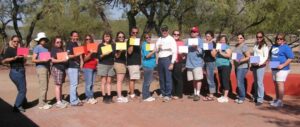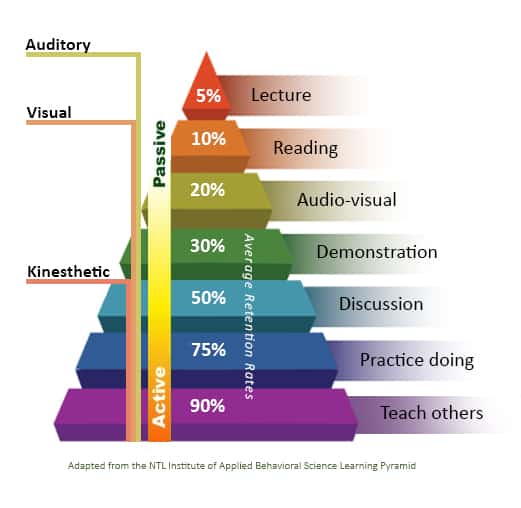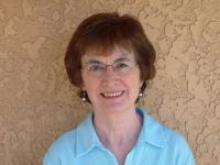In Walt Whitman’s poem, “When I Heard the Learn’d Astronomer,” the speaker—perhaps Whitman himself—concludes his description of an astronomy presentation with these words:
Till rising and gliding out I wander’d off by myself,
In the mystical moist night-air, and from time to time,
Look’d up in perfect silence at the stars.
This reaction would bring joy to innumerable astronomy Education and Public Outreach presenters. A student who trades a passive experience to go outside, look up, and observe firsthand the complexity and beauty of the night sky—Yippee!
The National Training Laboratories’ “Pyramid of Learning” has been around for decades, attracting both fans and skeptics of its reported results. However, the overall structure is worth considering. Simply summarized, the Pyramid divides methods of learning into passive (lecture, reading, audio-visual, demonstration) and active, or participatory, (discussion, practice doing, teaching others).
The Pyramid of Learning also assigns average retention rates to each method of presentation, with the small tip of the Pyramid representing lectures (5% retention rate) and the broad base of the Pyramid representing the process of teaching others (90% retention rate). All categories are considered auditory. From reading through teaching are considered visual, and from discussion through teaching are considered kinesthetic.
Active and Passive Presenting
A half-day or full-day workshop, by its very nature, usually involves 4–8 contact hours and usually focuses on one main topic. Information dissemination is a top priority, with the remainder of the time spent on Q&A, demos, hands-on activities, or observations. Longer duration programs, such as the two- to four-week teacher training workshops we created, can provide as many as 120 contact hours.
 Girl Scout leaders use their Constellation Cards to show the temperature and color ranges of stars. Photo by L. Lebofsky.
Girl Scout leaders use their Constellation Cards to show the temperature and color ranges of stars. Photo by L. Lebofsky.Staff for our four-week workshops included two astronomers, a planetarium education director, a night sky observing expert, a science grad student, an Education Department intern, teacher presenters from prior workshops, two professional evaluators, and a project coordinator, each with a unique area of expertise and different styles of interacting with participants. Since an audience of 16-25 participants will exhibit some level of most of the Multiple Intelligences (cf. May 1, 2019 blog), a staff of presenters representing a diverse array of learning styles of their own enriches the experience for everyone.
The workshop schedule included informal lectures (Newton’s Laws, gravity and orbits, Terrestrial planets, etc.) and planetarium presentations (motion and phases of the Moon, Sun and stars through the year, motion of planets, etc.). Time for Q&A and demonstrations frequently followed presentations or preceded hands-on experiences.
Hands-on activities varied from whole group to small group to individual projects. A sample of the activities included building comets, sundials, and astrolabes; crater formation; balloon cars and bottle rockets; shadow measurements; building solar cookers and plotting results; scaling by size and distance; constellation viewers; parallax; using astrolabes and planispheres; sky lore; the science/literature connection, etc.
Empowering Learners
As part of our NSF-funded Project ARTIST, we were able to take teachers with us to regional and national National Science Teachers Association (NSTA) conventions. Many of the elementary school teachers were initially uncomfortable with this idea, verbalizing their hesitancy to consider themselves science teachers. Imagine the positive effect on our teachers, not only attending, but presenting at, conferences where thousands of other teachers of science were gathered!
One of the most popular, and perhaps messiest, projects we created involved planning and building lunar colonies from recycled materials. When the Division for Planetary Sciences (DPS) of the American Astronomical Society held its annual meeting in Tucson, we invited a wide variety of people interested in science education to participate in the education session. When we also asked local colleagues to donate recycled materials for use in constructing the colonies, the most unique contribution was a large quantity of wine corks from the Vatican Observatory staff!
The project culminated with small groups of teachers, professional astronomers, and NASA personnel working together—on the floor, sleeves rolled up, hot glue guns in hand⸺to create and present their visions of lunar colonies. The teachers talked about this experience for years.
Let Other “Stars” Shine
One of the veteran teacher presenters from our previous workshops, our long-time friend Thea Cañizo, reworked the lunar colonies project into a format more practical for a middle school setting. Thea turned the original idea into a Mars Exploratory Vehicles design project. After content instruction, small groups of students received one of ten Mission Task Cards which gave the parameters their robotic rovers must accomplish. Students then researched information on Mars in general and their group’s vehicle task specifically.
Before constructing their vehicles, student groups read and discussed the Project Report Form, focusing on questions such as how the vehicle is controlled, how it is powered, and how the vehicle would overcome difficulties such as uneven terrain, dust storms, etc. After construction, report forms were filled out and the groups presented their vehicles to the class.
Thea wrote an article describing her Mars Exploratory Vehicles project, which was published in NSTA’s Science Scope magazine. Based on her work, the American Institute of Aeronautics and Astronautics (AIAA) outreach group designed their Mars Rover Celebration Curriculum Module, which was taught at elementary and middle school student workshops for many years.
Sometimes letting the “learners” refine your ideas and become the “teachers” can lead to great results—especially when the learners were fantastic teachers to begin with!
LINKS:
AIAA: www.aiaa.org
NSTA: https://www.nsta.org
NSTA magazines: https://www.nsta.org/publications (Science Scope, Science and Children, The Science Teacher, Your College Classroom)


